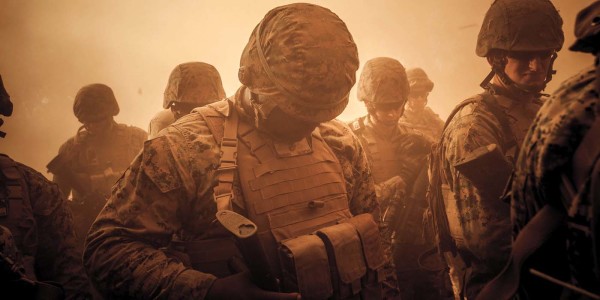The ‘Renegade’ Blog That Brought More Veterans Into The Media Is Back
Hearing the sounds of Afghans screaming and looking out at the black smoke of burning tires beyond the perimeter in...

Hearing the sounds of Afghans screaming and looking out at the black smoke of burning tires beyond the perimeter in May 2005, I got my first taste of how poorly researched journalism can have real-world consequences.
I was just one Marine among about a hundred others at Jalalabad Air Field in eastern Afghanistan — at the time nothing more than a small forward operating base ringed by Hesco barriers, sandbags, and concertina wire. A special forces camp manned by Green Berets and CIA spooks was situated on the other end of a dusty air strip.
We were preparing for the possibility the FOB would be attacked by thousands of Afghan civilians, angry that interrogators at the American military prison in Guantanamo Bay, Cuba had placed copies of the Quran on the toilet.
In the end, rioters never got much closer than the external perimeter manned by Afghan security forces. But at some point, they fired into the crowd of civilians. At least four people died.
And yet, that story from Guantanamo wasn't true. Neither were stories from that day reporting that U.S. Marines had opened fire on civilians. But I had no way to tell my story and no idea how to contact reporters to tell them what really happened.
This kind of story likely repeated itself for many other service-members until the military blogging scene gained prominence — most notably during the 2007 Iraq War Surge. And then that scene would enter the mainstream roughly a year after that, as another blog emerged from inside one of America's most prominent newspapers.
It was called At War.
“It had a different feel,” said C.J. Chivers, a Marine Corps veteran and Pulitzer Prize-winning reporter for The New York Times. At War was, from its beginning, strikingly different from the rest of the Times. It had few resources, and maintained the feel of a garage band, comprised of editors, writers, and contributors focused on telling the often-untold stories of what it really feels like to go into combat in a post-9/11 world.
There was the 19-year-old Marine, explaining what he saw, and how he felt, as he pulled the trigger of his M-16 and watched an Iraqi insurgent crumple to the ground in front of him.
Another post, in April 2011, highlighted the stress some military wives face on the home front as their husbands come and go to war, telling the story of one who nearly killed herself. “If you are reading this, you should know that I am dead,” wrote Jessica Harp, a 27-year-old Army wife. “At least I hope I'm dead.”
From 2009 to 2016, the At War blog became the space where military members, spouses, and war reporters could share their experiences with a wide audience. And it was a space where many began their writing careers.
“All sorts of people got their start there,” Chivers said of the blog, which slowly died off as the wars in Afghanistan in Iraq seemed to be winding down.
Teresa Fazio, who offered a deeply personal account of a “mortuary affair in Iraq” for At War, earned her first byline there in 2013. Thomas Gibbons-Neff, now a Pentagon correspondent for The Times, first wrote for the site in 2012 about his experience as a student veteran. And John Ismay, a Navy EOD officer, in 2012 traced the origins of arms found after the Libyan Civil War, with Chivers' help.
“There’s zero chance I’d be a working journalist today without Chris Chivers encouraging me to write for At War in January 2012,” Ismay said. “I was really skeptical about the idea of becoming a journalist, but once I found my first story for At War and realized no one else had written about the topic before, I realized I was hooked.”
I never personally wrote for At War. I began my own career by contributing to Business Insider's military and defense section. And many others started here, at Task & Purpose, or at similar military-focused upstarts like War on the Rocks and Strategy Bridge.
Sites like these and At War continue to fill a void in media today, where the number of working journalists with military experience are relatively few.
As Chivers says, there is a “fluency that combat veterans can bring to certain types of coverage.” There is also a level of credibility that can be offered to certain subjects — weapons identification, for example — while potential sources can feel more trust in veteran journalists, since they have often been there, done that just like them.
Which is why The Times relaunched its “renegade” At War blog earlier this month, beginning with a first-hand account written by Matt Ufford of how the Iraq War began. Its new editor Lauren Katzenberg (who previously served as Managing Editor here at Task & Purpose) hopes that At War's return will inspire many more people to share their voices, at a time when there is far less transparency around wars being carried out in America's name.
“We want to make sure At War is covering war, but from multiple angles,” Katzenberg said. “It’s not just the American experience the veterans experience. We want to make sure its being portrayed through a wide lens of conflict.”
And perhaps, one of those voices, will be yours.
WATCH NEXT:
